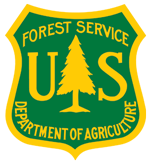-
 A LIDAR‐DERIVED EVALUATION OF WATERSHED‐SCALE LARGE WOODY DEBRIS SOURCES AND RECRUITMENT MECHANISMS: COASTAL MAINE, USA
A LIDAR‐DERIVED EVALUATION OF WATERSHED‐SCALE LARGE WOODY DEBRIS SOURCES AND RECRUITMENT MECHANISMS: COASTAL MAINE, USA
-
In‐channel large woody debris (LWD) promotes quality aquatic habitat through sediment sorting, pool scouring and in‐stream nutrient retention and transport. LWD recruitment occurs by numerous ecological and geomorphic mechanisms including channel migration, mass wasting and natural tree fall, yet LWD sourcing on the watershed scale remains poorly constrained. We developed a rapid and spatially extensive method for using light detection and ranging data to do the following: (i) estimate tree height and recruitable tree abundance throughout a watershed; (ii) determine the likelihood for the stream to recruit channel‐spanning trees at reach scales and assess whether mass wasting or channel migration is a dominant recruitment mechanism; and (iii) understand the contemporary and future distribution of LWD at a watershed scale. We utilized this method on the 78‐km‐long Narraguagus River in coastal Maine and found that potential channel‐spanning LWD composes approximately 6% of the valley area over the course of the river and is concentrated in spatially discrete reaches along the stream, with 5 km of the river valley accounting for 50% of the total potential LWD found in the system. We also determined that 83% of all potential LWD is located on valley sides, as opposed to 17% on floodplain and terrace surfaces. Approximately 3% of channel‐spanning vegetation along the river is located within one channel width of the stream. By examining topographic and morphologic variables (valley width, channel sinuosity, valley‐ side slope) over the length of the stream, we evaluated the dominant recruitment processes along the river and often found a spatial disconnect between the location of potential channel‐spanning LWD and recruitment mechanisms, which likely explains the low levels of LWD currently found in the system. This rapid method for identification of LWD sources is extendable to other basins and may prove valuable in locating future restoration projects aimed at increasing habitat quality through wood additions.
key words: large woody debris; lidar; river restoration; habitat
Located in
Resources
/
Climate Science Documents
-
 Effects of Flow Regulation on Shallow-Water Habitat Dynamics and Floodplain Connectivity
Effects of Flow Regulation on Shallow-Water Habitat Dynamics and Floodplain Connectivity
-
Our study examined the effects of flow regulation on the spatiotemporal availability of shallow habitat patches with slow current velocity (SSCV patches) and floodplain inundation in the unregulated Yellowstone River and the regulated Missouri River in Montana and North Dakota. We mapped representative sites and used hydraulic models and hydrograph data to describe the frequency and extent of floodplain inundation and the availability of SSCV habitat over time during different water years. In the Yellowstone River the distribution, location, and size of SSCV patches varied but followed an annual pattern that was tied to the snowmelt runoff hydrograph. There was less variation in patch distribution in the Missouri River, and the pattern of habitat availability was influenced by flow regulation. Regulated flows and their effects on channel mor- phology and patterns of vegetation establishment resulted in 3.0–3.5 times less area of inundated woody vegetation during normal and dry years in the Missouri River compared with the Yellow- stone River. The differences we observed in SSCV patch dynamics between rivers may have implications for fish populations and community structure through affecting the survival of early life stages. At a larger scale, the smaller area of vegetation inundated in the Missouri River suggests that nutrient cycling and the ecological benefits associated with a moving littoral zone are reduced by the altered flow and sediment regime in that river. Accurate assessments of the effects of flow alteration and successful efforts to restore riverine ecosystems will require consideration of physical and biotic processes that operate at multiple spatial and temporal scales.
Located in
Resources
/
Climate Science Documents
-
 1.5°C or 2°C: a conduit’s view from the science-policy interface at COP20 in Lima, Peru
1.5°C or 2°C: a conduit’s view from the science-policy interface at COP20 in Lima, Peru
-
An average global 2°C warming compared to pre-industrial times is commonly understood as the most important target in climate policy negotiations. It is a temperature target indicative of a fiercely debated threshold between what some consider acceptable warming and warming that implies dangerous anthropogenic interference with the climate system and hence to be avoided. Although this 2°C target has been officially endorsed as scientifically sound and justified in the Copenhagen Report issued by the 15th Conference of the Parties (COP) of the United Nations Framework Convention on Climate Change (UNFCCC) in 2009, the large majority of countries (over two-thirds) that have signed and ratified the UNFCCC strongly object to this target as the core of the long-term goal of keeping temperatures below a certain danger level. Instead, they promote a 1.5°C target as a more adequate limit
for dangerous interference. At COP16 in Cancun, parties to the convention recognized the need to consider strengthening the long-term global goal in the so-called 2013–2015 Review, given improved scientific knowledge, including the possible adoption of the 1.5°C target. In this perspective piece, I examine the discussions of a structured expert dialogue (SED) between selected Intergovernmental Panel on Climate Change (IPCC) authors, myself included, and parties to the convention to assess the adequacy of the long-term goal. I pay particular attention to the uneven geographies and power differentials that lay behind the ongoing political debate regarding an adequate target for protecting ecosystems, food security, and sustainable development.
Located in
Resources
/
Climate Science Documents
-
 Biodiversity gains from efficient use of private sponsorship for flagship species conservation
Biodiversity gains from efficient use of private sponsorship for flagship species conservation
-
To address the global extinction crisis, both efficient use of existing conservation funding and new sources of funding are vital. Private sponsorship of charismatic ‘flagship’ species conservation represents an important source of new funding, but has been criticized as being inefficient. However, the ancillary benefits of privately sponsored flagship species conservation via actions benefiting other species have not been quantified, nor havethe benefits of incorporating such sponsorship into objective prioritization protocols. Here, we use a comprehensive dataset of conservation actions for the 700 most threatened species in New Zealand to examine the potential biodiversity gains from national private flagship species sponsorship programmes. We find that private funding for flagship species can clearly result in additional species and phylogenetic diversity conserved, via conservation actions shared with other species. When private flagship species funding is incorporated into a prioritization protocol to preferentially sponsor shared actions, expected gains can be more than doubled. However, these gains are consistently smaller than expected gains in a hypothetical scenario where private funding could be optimally allocated among all threatened species. We recommend integrating private sponsorship of flagship species into objective prioritization protocols to sponsor efficient actions that maximize biodiversity gains, or wherever possible, encouraging
private donations for broader biodiversity goals.
Located in
Resources
/
Climate Science Documents
-
 Climate: Sawyer predicted rate of warming in 1972
Climate: Sawyer predicted rate of warming in 1972
-
Excerpt: "In four pages Sawyer summarized what was known about the role of carbon dioxide in enhancing the natural greenhouse effect, and made a remarkable prediction of the warming expected at the end of the twentieth century.He concluded that the 25% increase in atmospheric carbon dioxide predicted to occur by 2000 corresponded to an increase of 0.6 °C in world temperature..... In fact the global surface temperature rose about 0.5 °C between the early 1970s and2000. Considering that global temperatures had, if anything, been falling in the decades leading up to the early 1970s, Sawyer’s prediction of a reversal of this trend, and of the correct magnitude of the warming, is perhaps the most remarkable long-range forecast ever made.
Despite huge efforts, and advances in the science, the scientific consensus on the amount of global warming
expected from increasing atmospheric carbon dioxide concentrations has changed little from that in Sawyer’s time.
Located in
Resources
/
Climate Science Documents
-
 Growing feedback from ocean carbon to climate
Growing feedback from ocean carbon to climate
-
The finding that feedbacks between the ocean’s carbon cycle and climate may
become larger than terrestrial carbon–climate feedbacks has implications for the
socio-economic effects of today’s fossil-fuel emissions.
Located in
Resources
/
Climate Science Documents
-
 Temporal dynamics of a commensal network of cavity-nesting vertebrates: increased diversity during an insect outbreak
Temporal dynamics of a commensal network of cavity-nesting vertebrates: increased diversity during an insect outbreak
-
Network analysis offers insight into the structure and function of ecological
communities, but little is known about how empirical networks change over time during
perturbations. ‘‘Nest webs’’ are commensal networks that link secondary cavity-nesting
vertebrates (e.g., bluebirds, ducks, and squirrels, which depend on tree cavities for nesting)
with the excavators (e.g., woodpeckers) that produce cavities. In central British Columbia,
Canada, Northern Flicker (Colaptes auratus) is considered a keystone excavator, providing
most cavities for secondary cavity-nesters. However, roles of species in the network, and
overall network architecture, are expected to vary with population fluctuations. Many
excavator species increased in abundance in association with a pulse of food (adult and larval
beetles) during an outbreak of mountain pine beetle (Dendroctonus ponderosae), which peaked
in 2003–2004. We studied nest-web dynamics from 1998 to 2011 to determine how network
architecture changed during this resource pulse.Cavity availability increased at the onset of the beetle outbreak and peaked in 2005. During and after the outbreak, secondary cavity-nesters increased their use of cavities made by five species of beetle-eating excavators, and decreased their use of flicker cavities. We found low link turnover, with 74% of links conserved from year to year. Nevertheless, the network
increased in evenness and diversity of interactions, and declined slightly in nestedness and
niche overlap. These patterns remained evident seven years after the beetle outbreak,
suggesting a legacy effect. In contrast to previous snapshot studies of nest webs, our dynamic approach reveals how the role of each cavity producer, and thus quantitative network architecture, can vary over
time. The increase in interaction diversity with the beetle outbreak adds to growing evidence
that insect outbreaks can increase components of biodiversity in forest ecosystems at various
temporal scales. The observed changes in (quantitative) network architecture contrast with the
relatively stable (qualitative) architecture of empirical mutualistic networks that have been
studied to date. However, they are consistent with recent theory on the importance of
population fluctuations in driving network architecture. Our results support the view that
models should allow for the possibility of rewiring (species switching partners) to avoid
overestimation of secondary extinction risk.
Located in
Resources
/
Climate Science Documents
-
 Impacts of mountaintop mining on terrestrial ecosystem integrity: identifying landscape thresholds for avian species in the central Appalachians, United States
Impacts of mountaintop mining on terrestrial ecosystem integrity: identifying landscape thresholds for avian species in the central Appalachians, United States
-
Reclaimed mine-dominated landscapes (less forest and more grassland/shrubland cover) elicited more negative (57 %) than positive (39 %) species responses. Negative thresholds for each landscape metric generally occurred at lower values than positive thresholds, thus negatively responding species were
detrimentally affected before positively responding species benefitted. Forest interior birds generally
responded negatively to landscape metric thresholds, interior edge species responses were mixed, and early
successional birds responded positively. The forest interior guild declined most at 4 % forest loss, while
the shrubland guild increased greatest after 52 % loss
Located in
Resources
/
Climate Science Documents
-
 Are conservation organizations configured for effective adaptation to global change?
Are conservation organizations configured for effective adaptation to global change?
-
Conservation organizations must adapt to respond to the ecological impacts of global change. Numerous
changes to conservation actions (eg facilitated ecological transitions, managed relocations, or increased corridordevelopment) have been recommended, but some institutional restructuring within organizations may also be needed. Here we discuss the capacity of conservation organizations to adapt to changing environmental
conditions, focusing primarily on public agencies and nonprofits active in land protection and management
in the US. After first reviewing how these organizations anticipate and detect impacts affecting target
species and ecosystems, we then discuss whether they are sufficiently flexible to prepare and respond by reallocating funding, staff, or other resources. We raise new hypotheses about how the configuration of different
organizations enables them to protect particular conservation targets and manage for particular biophysical
changes that require coordinated management actions over different spatial and temporal scales. Finally, we
provide a discussion resource to help conservation organizations assess their capacity to adapt.
Located in
Resources
/
Climate Science Documents
-
 A global overview of drought and heat-induced tree mortality reveals emerging climate change risks for forests
A global overview of drought and heat-induced tree mortality reveals emerging climate change risks for forests
-
Greenhouse gas emissions have significantly altered global climate, and will continue to do so in the
future. Increases in the frequency, duration, and/or severity of drought and heat stress associated with
climate change could fundamentally alter the composition, structure, and biogeography of forests in
many regions. Of particular concern are potential increases in tree mortality associated with climateinduced
physiological stress and interactions with other climate-mediated processes such as insect
outbreaks and wildfire. Despite this risk, existing projections of tree mortality are based on models that
lack functionally realistic mortality mechanisms, and there has been no attempt to track observations of
climate-driven tree mortality globally. Here we present the first global assessment of recent tree
mortality attributed to drought and heat stress. Although episodic mortality occurs in the absence of
climate change, studies compiled here suggest that at least some of the world’s forested ecosystems
already may be responding to climate change and raise concern that forests may become increasingly
vulnerable to higher background tree mortality rates and die-off in response to future warming and
drought, even in environments that are not normally considered water-limited. This further suggests
risks to ecosystem services, including the loss of sequestered forest carbon and associated atmospheric
feedbacks. Our review also identifies key information gaps and scientific uncertainties that currently
hinder our ability to predict tree mortality in response to climate change and emphasizes the need for a
globally coordinated observation system. Overall, our review reveals the potential for amplified tree
mortality due to drought and heat in forests worldwide.
Located in
Resources
/
Climate Science Documents























